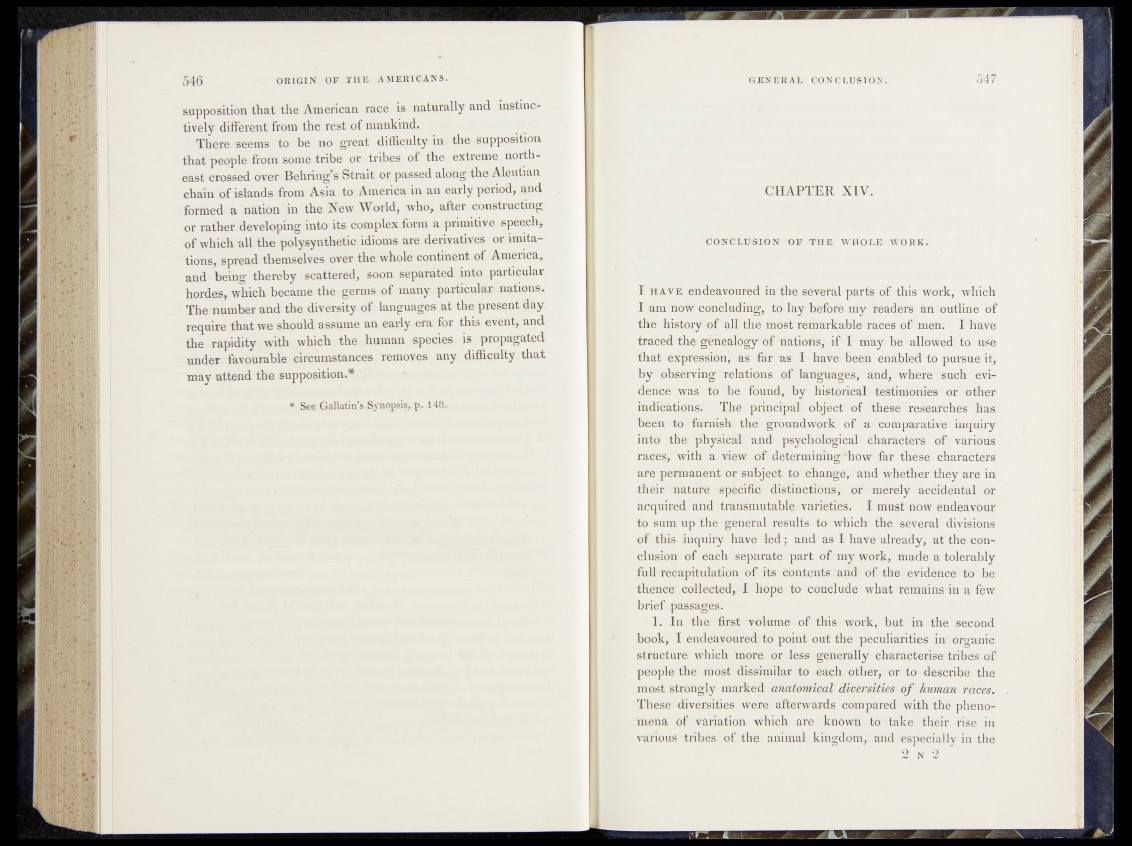
supposition that the American race is. naturally and instinctively
different from the rest of mankind.
There seems to be no great difficulty in the supposition
that people from some tribe or tribes of the extreme northeast
crossed over Behring’s Strait or passed along the Aleutian
chain of islands from Asia to America in an early period, and
formed a nation in the New World, who, after constructing
or rather developing into its complex form a primitive speech,
of which, all the polysynthetic idioms are derivatives or imitations,
spread themselves over the whole continent of America,
and being thereby scattered, soon separated into particular
hordes, which became the germs of many particular nations.
The number and the diversity of languages at the present day
require that we should assume an eariy-era for this event, and
the rapidity with which the human species is propagated
under favourable circumstances removes any difficulty that
may attend the supposition.*
* See Gallatin’s Synopsis, p, 148.
CHAPTER XIV.
CONCLUSION OF THE WHOLE WORK.
I have endeavoured in the several parts of this work, which
I am noto concluding, to lay before mÿ readers an outline of
the history of all tifo' Mosfcremarkable races of mem I have
traced the gêneafogysöf nations, I may be allówëthto use
that expression,* as far as I have' been enabled to pursue it,
by* observing relations of languages; and, where such eVP
dence was to be found, by historical testimonies or other
indications.’ The principal object of these researches has
been to furnish the groundwork of a comparative inquiry
into the physical and psychotegiCab characters of" various
raees, with a view of determining %hoW far these characters
are permanent or subject to change,, and whether they are in
their nature specific distinctions; or merely accidental of
acquired and transmu tablé varieties. I must now èndeavbur
to sum up the general results to which the' -several divisions
of this inquiry have led ; and as l have already; at the conclusion
of each separate part of my work, made a tolerably
full recapitulation of its contents- and of the evidence t c be’
thence' collected, I hope to conclude what remains in a few
brief passages. .
1. In the first volume of this work, but in the second
book, I endeavoured to point out the peculiarities in organic?
structure wbiefc more or less generally characterise tribes-of
people the most dissimilar to each other; or to describe the
most strongly marked anatomical diversities o f human races.
These diversities were afterwards compared with the phenomena
of variation which are known to ’take their • rise iu
various tribes of the animal kingdom, and especially in the
2 n 2